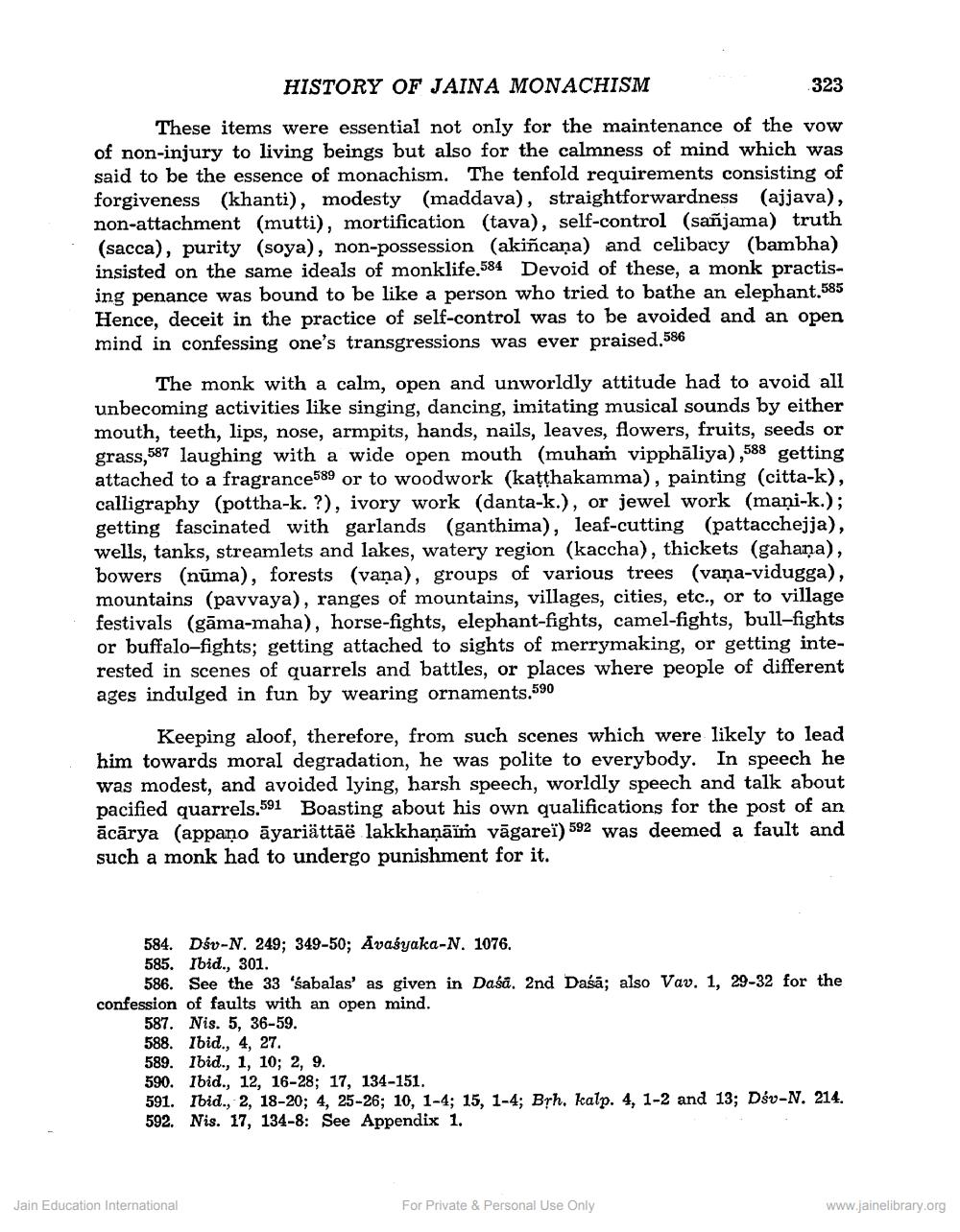________________
HISTORY OF JAINA MONACHISM
323
These items were essential not only for the maintenance of the vow of non-injury to living beings but also for the calmness of mind which was said to be the essence of monachism. The tenfold requirements consisting of forgiveness (khanti), modesty (maddava), straightforwardness (ajjava), non-attachment (mutti), mortification (tava), self-control (sañjama) truth (sacca), purity (soya), non-possession (akiñcana) and celibacy (bambha) insisted on the same ideals of monklife.584 Devoid of these, a monk practising penance was bound to be like a person who tried to bathe an elephant.585 Hence, deceit in the practice of self-control was to be avoided and an open mind in confessing one's transgressions was ever praised.586
The monk with a calm, open and unworldly attitude had to avoid all unbecoming activities like singing, dancing, imitating musical sounds by either mouth, teeth, lips, nose, armpits, hands, nails, leaves, flowers, fruits, seeds or grass,587 laughing with a wide open mouth (muhaṁ vipphāliya),588 getting attached to a fragrance 589 or to woodwork (katthakamma), painting (citta-k), calligraphy (pottha-k. ?), ivory work (danta-k.), or jewel work (mani-k.); getting fascinated with garlands (ganthima), leaf-cutting (pattacchejja), wells, tanks, streamlets and lakes, watery region (kaccha), thickets (gahana), bowers (nüma), forests (vana), groups of various trees (vana-vidugga), mountains (pavvaya), ranges of mountains, villages, cities, etc., or to village festivals (gāma-maha), horse-fights, elephant-fights, camel-fights, bull-fights or buffalo-fights; getting attached to sights of merrymaking, or getting interested in scenes of quarrels and battles, or places where people of different ages indulged in fun by wearing ornaments.590
Keeping aloof, therefore, from such scenes which were likely to lead him towards moral degradation, he was polite to everybody. In speech he was modest, and avoided lying, harsh speech, worldly speech and talk about pacified quarrels.591 Boasting about his own qualifications for the post of an ācārya (appano āyariättāë lakkhaņāïm vāgareï) 592 was deemed a fault and such a monk had to undergo punishment for it.
584. Dáv-N. 249; 349-50; Avašyaka-N. 1076. 585. Ibid., 301.
586. See the 33 'sabalas' as given in Dasa. 2nd Daśā; also Vav. 1, 29-32 for the confession of faults with an open mind.
587. Nis. 5, 36-59. 588. Ibid., 4, 27. 589. Ibid., 1, 10; 2, 9. 590. Ibid., 12, 16-28; 17, 134-151. 591. Ibid., 2, 18-20; 4, 25-26; 10, 1-4; 15, 1-4; Brh, kalp. 4, 1-2 and 13; Dév-N. 214. 592. Nis. 17, 134-8: See Appendix 1.
Jain Education International
For Private & Personal Use Only
www.jainelibrary.org




